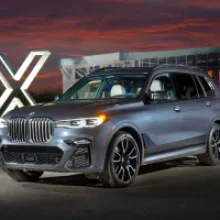SHERIDAN, WYOMING – April 22, 2025 - From Textile Decline to Automotive Ascent, Spartanburg’s Story Mirrors BMW’s Global Rise
A bold decision with global impact
In 1992, a pivotal moment in South Carolina’s economic history unfolded when BMW announced it would build its first full production plant outside Germany in Spartanburg. At a time when the Upstate region was struggling with the loss of over 60,000 textile jobs, this decision represented more than just a corporate expansion—it was the dawn of an industrial renaissance.
“The Board of Management realized that they were going to have to leave Germany with some production for other parts of the world,” said Carl Flesher, then VP of Marketing for BMW of North America. “That was a huge decision, but boy did they make the right one.”
Why South Carolina? Infrastructure, innovation, and initiative
BMW’s site selection team, led by Helmut Panke, evaluated more than 200 locations worldwide before narrowing the choice to Omaha, Nebraska, and South Carolina. The decision came down to Charleston’s port and the strategic recommendation of Governor Carroll Campbell, who advised relocating inland due to hurricane risks.
“We ended up in South Carolina because of the port operation… until Governor Carroll Campbell told us that was a mistake,” Flesher noted. “He said hurricanes hit there and our standing inventory would be in a lot of trouble.”
The resulting site in Greer was selected for its proximity to Interstate 85 and Greenville-Spartanburg International Airport. South Carolina spent nearly $127 million preparing the site and infrastructure—a gamble many initially criticized.
“At the time, people thought South Carolina had given away the store… I think now, people have come to realize that the greater risk was taken by BMW,” reflected Bobby Hitt, former managing editor of the Columbia Record.
Laying the foundation for transformation
Groundbreaking took place on September 30, 1992. By September 1994, BMW’s first Spartanburg-built 3 Series sedan rolled off the line, and the momentum only grew.
“The decision that takes us to America is a major step for BMW,” said BMW Chairman Eberhard von Kuenheim at the ceremony. “Together, ladies and gentlemen, we shall make automobiles from South Carolina famous throughout the world.”
Over the years, the plant’s growth mirrored BMW’s own global trajectory. From the Z3 debut in GoldenEye to becoming the global hub for BMW’s X models, Spartanburg proved its mettle.
A hub of innovation and sustainability
Spartanburg pioneered production flexibility—producing combustion, hybrid, and electric vehicles on a single line—and was first among BMW’s plants to use optical measurement systems and cooperative robots. In 2024, it brought sheet-metal stamping in-house for the first time.
Sustainability has also played a key role. The plant draws 20% of its energy from methane gas piped in from a nearby landfill and uses hydrogen fuel cells for internal transport systems.
Economic powerhouse with global reach
Today, Spartanburg is BMW’s largest production facility, covering eight million square feet and capable of producing up to 450,000 vehicles annually. In 2024 alone, it exported vehicles worth $10 billion to 120 countries.
Its local impact is equally impressive. From 570 employees in 1994 to over 11,000 in 2024, and from nine hoped-for suppliers to over 300 nationwide, BMW Manufacturing’s ripple effect is immense.
A University of South Carolina study pegged BMW Manufacturing’s total economic impact at $26.7 billion annually, supporting nearly 43,000 jobs.
“The presence of BMW has changed everything in the trajectory of the future in this state,” said Governor Henry McMaster. “It has created a manufacturing renaissance in South Carolina which is unequalled in any other state.”
A shared legacy, built together
More than just an investment, BMW’s Spartanburg plant symbolizes a shared vision between a state and a global automaker.
“When we made the decision to build this plant, the entire company was the size this plant is today,” remarked Oliver Zipse, Chairman of BMW’s Board of Management.
From less than 66,000 cars sold in the US in 1993 to over 371,000 in 2024, BMW’s bet on Spartanburg has paid off—and so has South Carolina’s on BMW.
To learn more about BMW Manufacturing’s legacy and innovation in Spartanburg, visit www.bmwusfactory.com.
